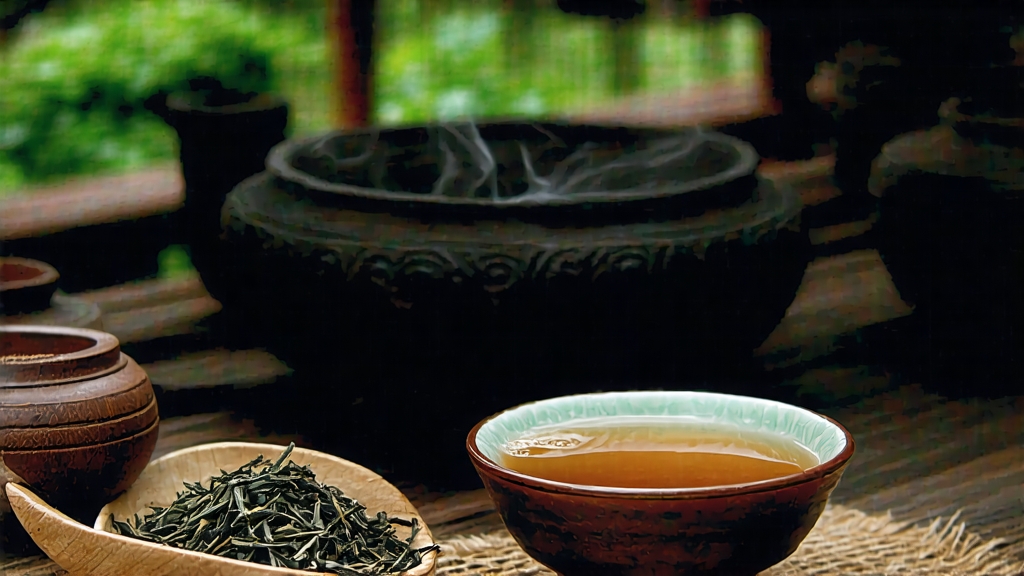
Hidden in the cloud-veiled ridges of Phoenix Mountain in northern Guangdong, Phoenix Dancong (Fenghuang Dancong) is often described by Chinese tea connoisseurs as “a living perfume library.” Unlike blended oolongs that aim for uniformity, Dancong—literally “single bush”—celebrates the idiosyncratic fragrance of each ancient tree. With more than eighty recognized aromatic profiles, ranging from honey-orchid to ginger-flower to almond-milk, this tea turns every steeping session into a sensory detective story.
A Brief Botanical Genealogy
The tea gardens sit between 350 m and 1,200 m on weathered granite soils. Centuries of seed propagation have produced a genetically diverse forest of tea trees; some specimens are over 600 years old, their trunks as thick as a man’s thigh. Local villagers classify these trees into “fragrance types” (xiang xing) rather than cultivar names, believing that micro-climate, altitude, and mineral strata imprint character more decisively than DNA alone. The most prestigious group, the “Ten Famous Aromas,” includes Yellow Gardenia, Almond Fragrance, and the legendary Song Zhong, said to have been transplanted by Song-dynasty refugees fleeing the Mongol invasion.
From Leaf to Lingering Scent: Crafting Dancong
Harvest begins at the first light of late March, when two-and-a-half leaves and a bud still hold overnight dew. The pluckers work barefoot on narrow stone ledges, singing call-and-response mountain songs that synchronize their movements. Once the baskets reach the village, the leaves are spread under the morning sun for “green killing” (shaqing) that lasts only 15–20 minutes—just long enough to wilt the edges without scorching the delicate enzymes.
What follows is a six-to-eight-hour dance of shaking and resting called zuoqing, “green-making.” The leaves are tossed in bamboo drums every half hour, bruising the margins so that oxidation can creep inward in a controlled crescent. Masters judge readiness by ear: a rustle like silk stockings signals the first phase; a muted thud indicates deeper oxidation. When the aroma shifts from cut grass to ripe peach, the leaf is rushed to a 200 °C wok for hand-firing that halts oxidation at roughly 30 %.
Charcoal baking is Dancong’s signature signature. Using lychee wood embers buried in ash, the tea is baked in paper-lined bamboo baskets for 6–12 hours, rested for a week, then rebaked up to three times. Each cycle deepens the “mountain rhyme” (yun) while locking in floral volatiles that might otherwise evaporate. The finished maocha is finally sorted tree by tree, ensuring that your Mi Lan Xiang (Honey-Orchid) comes from one mother tree and not a village blend.
Tasting the Mountain: A Gongfu Protocol
Chaozhou locals insist that Dancong demands the oldest porcelain it can find—tiny 30 ml cups whose crazing holds memories of every previous tea. Begin by pre-heating the gaiwan until it is too hot to touch; this “awakens the mountain.” Use 5 g of leaf for 100 ml of water just off a rolling boil (98 °C). The first infusion is a flash rinse, discarded to open the leaf and pay respect to the earth.
Subsequent steeps unfold like chapters:
1st–2nd: 5 seconds. Liquor the color of polished amber releases a top note of orchid and warm honey.
3rd–4th: 10–15 seconds. A creamy body emerges, reminiscent of fresh almond milk with a hint of gardenia.
5th–7th: 20–30 seconds. Mineral undertones—wet slate and granite—surface, grounding the fragrance.
8th onward: Extend by 10 seconds each time; the tea can yield 12–15 infusions before the aroma bridge finally collapses.
Between sips, listen. Chaozhou connoisseurs speak of “three sounds”: the hiss of water leaving kettle, the clink of lid against gaiwan, and the near-inaudible sigh of leaf unfurling. These micro-moments are considered part of the flavor.
Decoding the Aroma Wheel
Professional cuppers evaluate Dancong through four verticals:
- Qing xiang (green fragrance): reminiscent of fresh gardenia or lilac, indicating light baking.
- Nong x